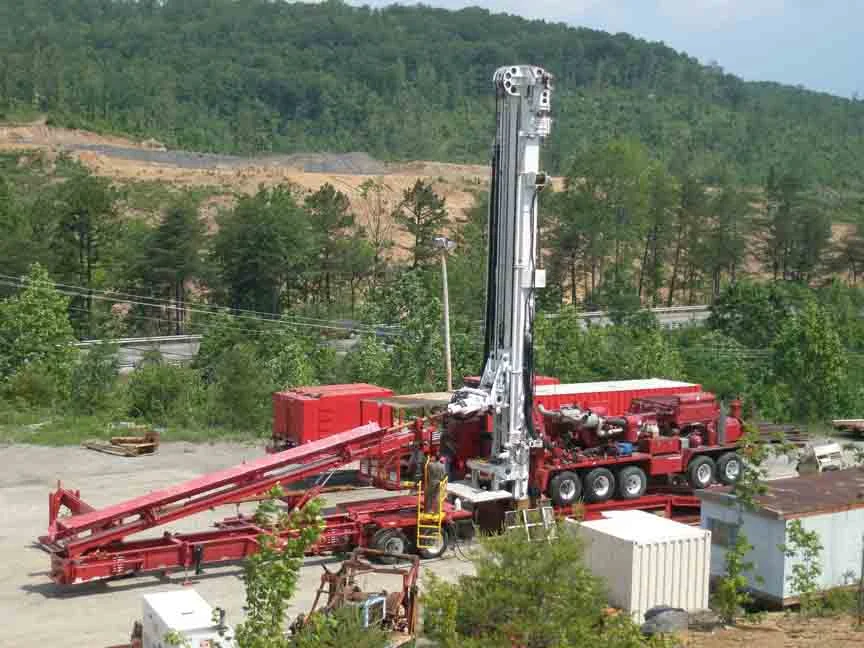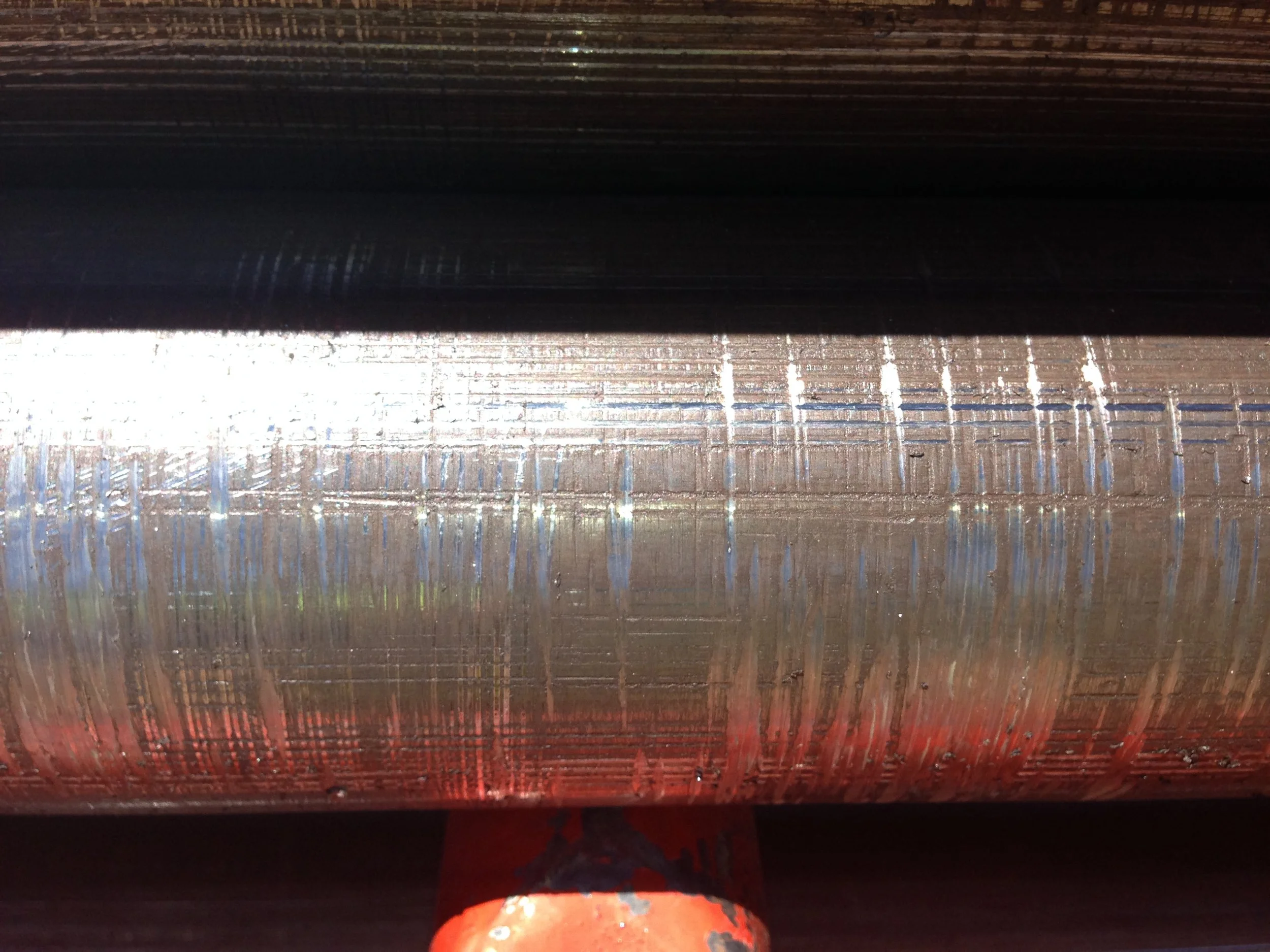Types of Hands-free Rod Handling Systems
By Colin Rice · Colin Rice Exploration Drilling Advisory · www.colinrice.co.za
The type of hands-free system to use, depends on the drill rig design and drilling application.
This is the second article of our Technical Series on Hands-Free Rod Handling Systems. Click here for an outline of the entire Hands-free Rod Handling Systems Series.
The first article in this series aimed to define automation in the context of drilling operations as well as define hands-free rod handling.
In order for a system to be hands free, it requires that a length of drill rod or drillpipe is mechanically lifted and placed in the mast in alignment with the rotation head of the drill rig so that one drill rod can be made up with another.
In all systems it is necessary that the drill rig and rod handling system have the ability to make-up and break-out connections between lengths of drill rod or drillpipe without human intervention. This can be achieved in different ways.
In the simplest form, the drill rod to be added to the drillstring will be laying horizontally on a rack or table and the handling system will merely pick the drill rod up and rotate it so that it is in alignment with the mast and the rotation head. In more complicated systems the drill rods will be stored in a bin or other storage facility and the rod handler will have to pick up, move and rotate the drill rod to achieve alignment with the rotation head. Available systems therefore have the ability to move in either two or three dimensions.
The previous article, made the distinction between the material and wall thickness of different drill rods. Don't forget to bear this difference in mind as you read through the rest of this article.
Heavy walled, rotary and rotary percussion drill pipe
Rotary drill pipe typically has API or modified API connections.
The thread profile and the relatively large wall thickness, makes these threads rugged and robust and therefore tolerant to a degree of misalignment during make-up and break-out.
Thin walled, wireline drill rods
Wireline threads are very thin walled and cannot tolerate any degree of misalignment during make-up or break-out. Any misalignment will cause significant damage to the thread and will detrimentally effect rod life and the carrying capacity of the joint.
Four broad types of hands-free rod handling systems
Mast carousel system
This system utilises a carousel which is mounted onto the drill rig mast (or boom) so that the drill rods in the carousel are always in the same alignment as the rotation head. When adding a drill rod, a mechanical arm moves the drill rod out of its holder into alignment with the rotation head. The arm then holds the drill rod while the connection between the rotation head and the drill rod is made-up. The mechanical arm then releases the drill rod and the bottom connection is made up.
All pre-split and multi-pass blasthole drill rigs are mast carousel types. The images below illustrate examples of a pre-split rig and a multi-pass blasthole drill.
Presplit drill rig with mast mounted carousel.
Multi-pass blasthole drill.
Carousels hold a limited number of lengths of drillpipe and so hole depth is limited by the number of drillpipes stored in the carousel.
Mast mounted carousels can only be used on top drive drills. While carousels have been used for many years they have not operated without incident, for example:
There have been numerous instances where a length of drill rod has fallen out of the mast because the top joint was not correctly made up before the rod was released by the mechanical loading arm.
There have also been instances where components have fallen out of the carousel loading mechanism due to wear and tear and poor maintenance procedures.
Horizontal carousel system
A local manufacturer supplies a free-standing horizontally orientated carousel. When adding a drill rod, the carousel is indexed so that a drill rod rolls out of the carousel into a rod tray. The drill rod is then pushed into a manipulator arm that is free to rotate from the receiving horizontal orientation to 45 degrees past vertical. As with the mast mounted carousel, horizontal carousels have limited storage capacity and so on deep holes it will be necessary to have multiple carousels available.
These carousels can only be used with top drive drills where the rotation head can be slid out of the mast to accept the added drill rod. A significant advantage of this type is that the carousels act as a drill rod carrier for transport purposes.
Horizontal carousel with manipulator.
V-trough system
Carousels have limited capacity, so to manage deeper hole applications where a greater number of lengths of drillpipe are required, “V-trough” systems can be used. These systems rely on the rotation head being able to tilt outwards away from the line of the mast to accept the drill rod in the V-trough.
In these systems, a drill rod is placed into a horizontally aligned trough – one end of the trough is then hydraulically raised until it aligns with the output shaft of the tilted rotation head, the drill rod in the V-trough is then moved towards the rotation head so that it can be made-up with the drill rod in the trough. A clamping device is mounted at the top of the V-trough to grip the drill rod during make-up so that sufficient torque can be applied to the connection by the rotation head.
Once the connection has been made-up, the rotation head is then traversed upwards into the mast and simultaneously tilted back into its normal drilling alignment. Once the drill rod is in normal alignment it can be made-up with the drill rod that is held in the rod clamp. The process is repeated as further drill rods are added to the drillstring.
V- trough systems typically only find application on top drive drill rigs where the drill rods are long and heavy.
It is necessary that a mechanical method of feeding lengths of drillpipe into the V-trough is provided, if space is not an issue, rod tables can be provided on either side of the V-trough to hold a large number of drill rods. The tables can be tilted to either load rods into the trough or accept rods that are rolled out of the trough. Again, the capacity of the rod tables will be limited.
In other systems, the rod tables are much smaller and merely act as a loading mechanism for the V-trough.
A V-trough system with large rod tables.
While the presentation of the drill rod to the rotation head is done “hands-free”, it is still necessary to load drill rods onto the rod table which can be achieved in a few ways:
If the drill rods are light enough to be manually handled (diamond drill rods for example), then they can be manually loaded onto the rod table. Typically diamond drill rods are transported from site to site on a truck or trailer and so manually transferring drill rods represents a significant risk and to a great extent negates the benefit of the hands-free system.
If the drill rods are too heavy to be manually handled they can be loaded onto the rod table using a forklift or other vehicle, the Schramm “LoadSafe” works in this way.
It is important to recognise that rotation head tilt is achieved through one or more hydraulic cylinders mounted on the rotation head and the rotation head slide that pushes the bottom of the rotation head outwards. When a length of drillpipe has been made up with the rotation head and the rotation head is traversed up the mast, the weight of the drillpipe creates a moment about the point of attachment of the hydraulic cylinders and in the event of a catastrophic hydraulic failure it is possible that the drillpipe could fall in an uncontrolled manner. It is therefore important to ensure that the hydraulic system has the necessary protection to ensure that the load cannot move in an uncontrolled manner in the event of a hydraulic failure.
Have a look at these videos that illustrate a V-trough system and the Schramm LoadSafe system.
Manipulator arm system
Carousel and V-trough systems are ideally suited to managing very long and heavy rotary drill rods and are applicable to top drive drills, they are however, less applicable to hydraulic longstroke drills.
There are many different variants of this type of rod handler but in all cases the drill rod is lifted out of a bin or rod basket and is then held by a manipulator arm that moves in two or three dimensions to place the drill rod into the correct alignment in the mast. The manipulator arm holds the drill rod using either one or more clamps or they are held magnetically in the manipulator arm. Because of the methods of holding the drill rod in the manipulator arm these systems are typically used with (relatively lightweight) wireline drill rods only.
The problem however is that wireline threads are extremely delicate compared to highly tapered API and modified API threads and so they cannot tolerate any degree of misalignment during make-up or break-out. It is difficult for any manipulator arm, or V-trough for that matter, to achieve perfect alignment between the threaded ends being connected and so serious and irreversible damage to the connections frequently occurs.
Have a look at this video that illustrate a manipulator arm system.
The next article in this series uncovers some of the problems that are encountered when using hands-free rod handling systems.












The exploration drilling industry is undoubtedly experiencing significant pressure to improve levels of safety performance through the implementation of a number of safety innovations…